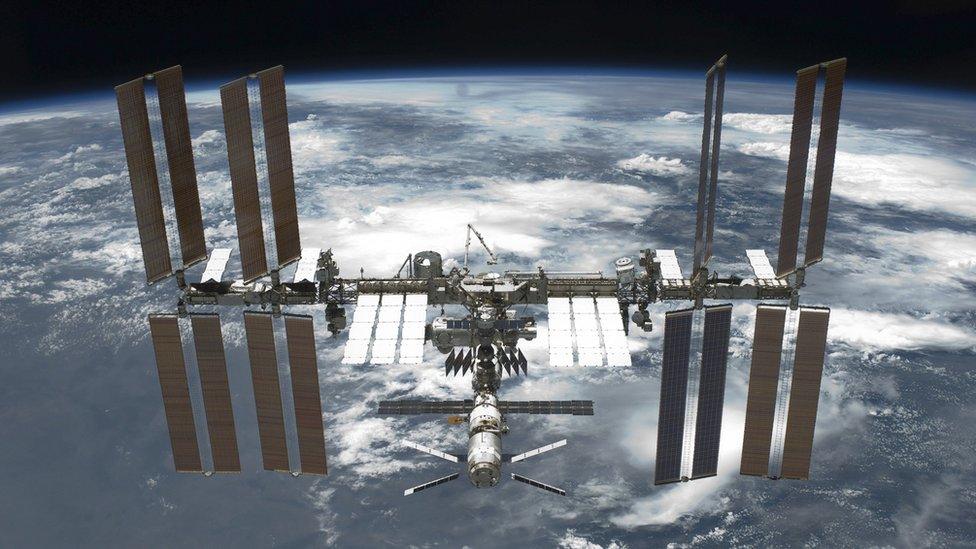The woman who paid $250,000 to go into space
- Published
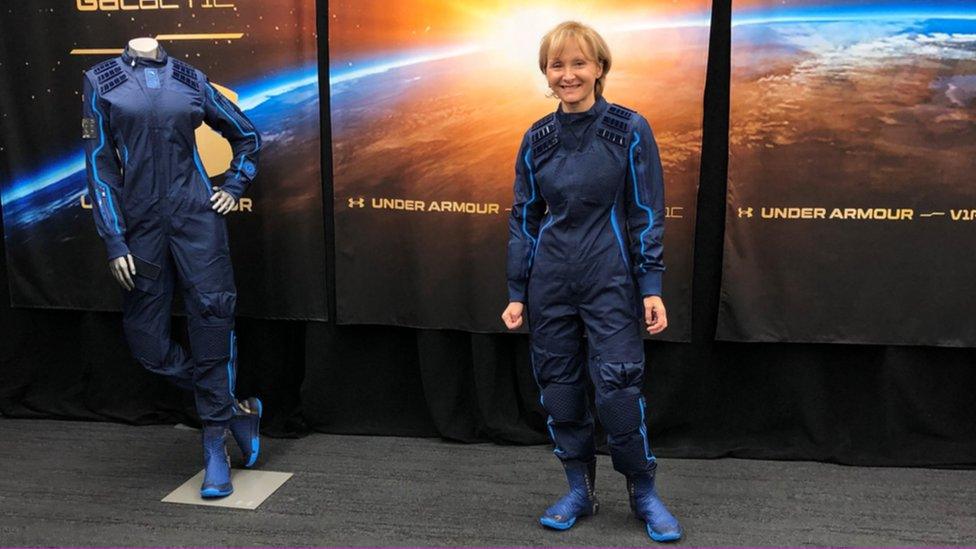
Ketty Maisonrouge has tried on her spacesuit and is ready for take off
Ketty Maisonrouge has waited 15 years for a trip that she knows will be out of this world.
The 61-year-old business school professor signed up back in 2005 for the promise of five minutes in zero-gravity, paying $250,000 (£190,500) to travel beyond the earth's atmosphere.
Now the company that sold her the ticket, Virgin Galactic, says it will finally begin flights this year. Its founder, Sir Richard Branson, will be on the first trip, and Mrs Maisonrouge won't be far behind.
"Hopefully it will be as amazing as I think," says Mrs Maisonrouge.
If all goes to plan, Virgin Galactic will be the first private company to take tourists into space. The company says 600 people have already purchased tickets, including celebrities like Justin Bieber and Leonardo DiCaprio.
But rival firms are close behind. Blue Origin, started by Amazon founder Jeff Bezos, has also starting speaking to possible passengers for trips it hopes to start this year, while SpaceX, founded by Tesla's Elon Musk, announced in 2019 that a Japanese billionaire would be its first passenger for a trip around the moon.
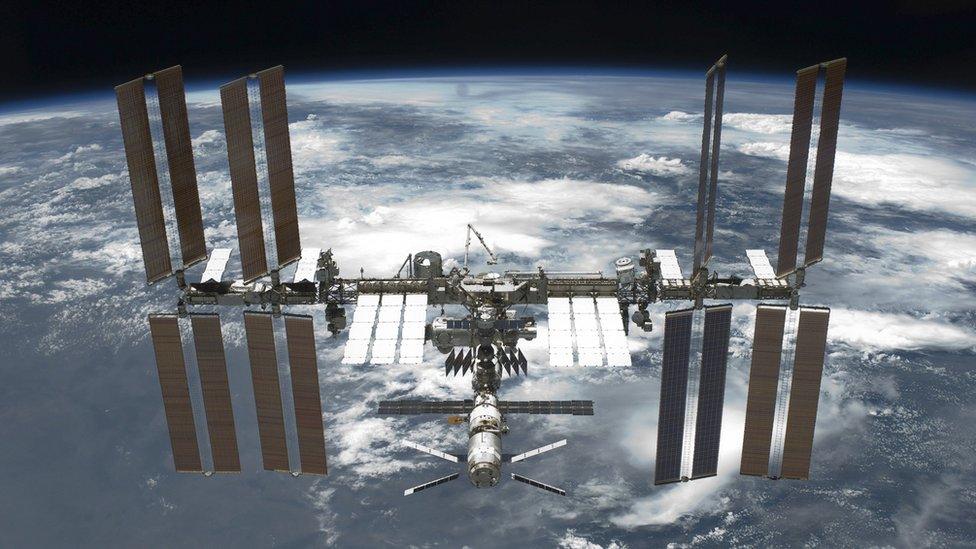
Nasa has announced it will allow private space tourists to visit the International Space Station for a fee
Dreaming of space
In 2019, Swiss bank UBS released a report estimating space tourism could become a $3bn industry in the next 10 years.
For Virgin Galactic, early buyers such as Mrs Maisonrouge helped prove the demand was there for private space travel - even with ticket prices at a quarter of a million dollars.
"To be able to put products as expensive as space on the market in the first place does include a high premium," explains Julia Hunter, a senior vice-president at Virgin Galactic responsible for the day-to-day running of the human spaceflight programme.
Mrs Maisonrouge's love of space started early. She can still remember vividly the moment in July 1969 when Neil Armstrong and Buzz Aldrin became the first humans to walk on the moon.
When she learned that Virgin Galactic was offering to send ordinary travellers to space, she immediately rushed to sign up.
Since buying her ticket, Mrs Maisonrouge has kept her plans mostly private, sharing them only with family, close friends and her fellow "founders" - the group of original Virgin Galactic ticket holders.
In November 2019, a group of them got their first chance to try on the spacesuits - designed by sportswear brand Under Armour - which they will wear on their trip to space.
"For me, it was like the realisation that this is really going to happen soon," says Mrs Maisonrouge. "When you've been waiting for 15 years, when you've been dreaming about it for as long as you can remember, you wonder until it happens if it will really happen."
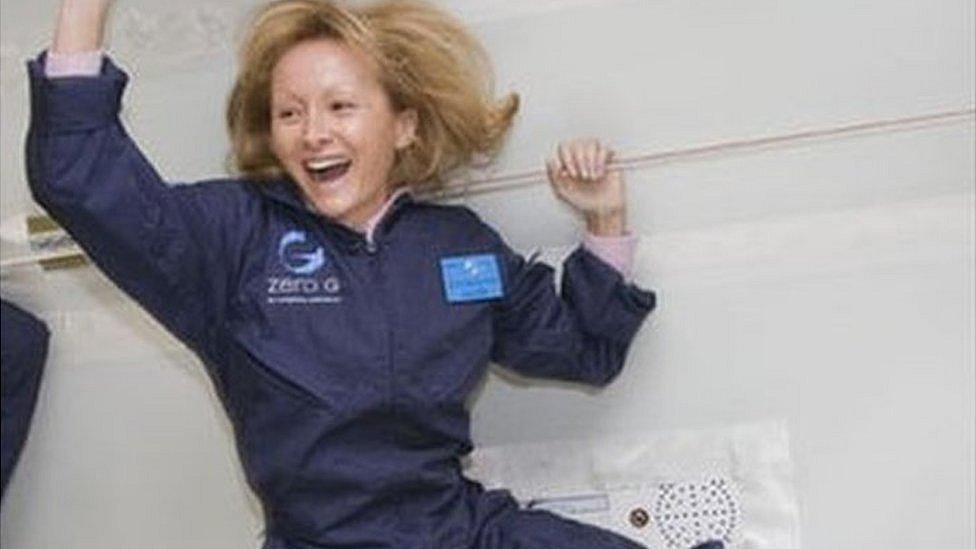
Ketty Maisonrouge has experienced zero gravity as part of her preparation
Unlike the astronauts from the legendary Apollo missions, who went through months of rigorous training and gruelling physical ordeals, Mrs Maisonrouge and her fellow space tourists will take just three days to train for their trip. Virgin Galactic says it could be shorter, but they want passengers to "understand the choreography" and "get the most" out of their experience.
She and fellow founders have also been given an early chance to visit Virgin Galactic's terminal at Spaceport America, in the desert of New Mexico. The company has designed a lounge equipped with floor-to-ceiling windows to view the launches, a barista to make fresh coffee and an interactive walkway.

Virgin Galactic's lounge is the first of what Spaceport America hopes will be many terminals at the complex
From here, Virgin Galactic's tourists will board spaceships for a 90-minute round trip with just a few minutes in low-orbit. It's a far more luxurious experience from the one that government astronauts have had.
Dan Hicks, who manages Spaceport America for the state of New Mexico, says Virgin Galactic is spearheading this new type of travel and that the facility will one day be a "full-up transportation hub for the space industry".
Multi-million dollar trip
A quarter of a million dollars may seem like a hefty price tag for a tourist trip. But Virgin Galactic says it expects near-term demand for space flights to far outstrip supply, which could even cause the price of tickets to rise.
Seven private citizens have already paid for multi-million dollar tickets to go into space with Russian Soyuz spaceflights going back as far as 2001, making them the first space tourists.
The National Aeronautics and Space Administration (Nasa) has also relied on Soyuz spaceships to take US astronauts to the International Space Station (ISS) since it ended its shuttle program in 2011, paying approximately $86m per spot.
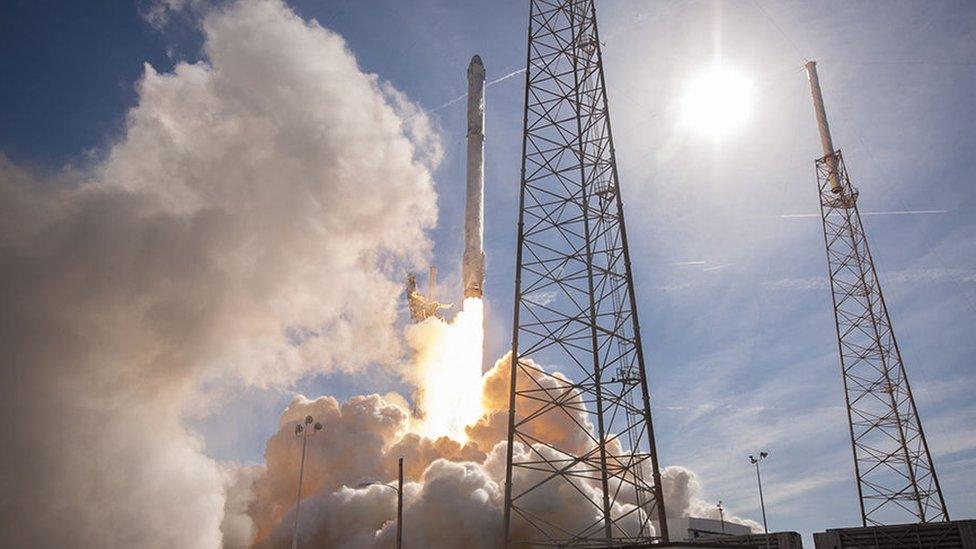
SpaceX has partnered with Nasa to send astronauts to space at a cost of nearly $55m per ticket
Nasa is now also turning to private enterprise. The agency has signed deals with SpaceX and Boeing to carry US astronauts. Those tickets don't come cheap either - Nasa is paying SpaceX $55m per spot and Boeing $90m.
Spaceflights for government astronauts and space tourists are only part of the potential private space industry. Point-to-point travel that leaves Earth's orbit could become a $20bn sector by 2030, according to UBS. By leaving the planet's orbit, trips across the world would be much faster.
SpaceX has already released marketing material for a 40-minute flight from New York City to Shanghai, using its spaceflight technology.
That could mean far more of us get the chance to sample space travel, at least briefly.

Virgin Galactic founder Sir Richard Branson celebrating after the company became the first human spaceflight company to list on the New York Stock Exchange
The space travel industry has caught the eye not just of billionaire businessmen such as Sir Richard and Jeff Bezos, but also Wall Street investors. Virgin Galactic became the first human space flight company to list its shares on the stock market in October 2019.
For the many people hoping to make money from space tourism, 2020 could be the year when stellar promises really start to take off.
- Published28 October 2019
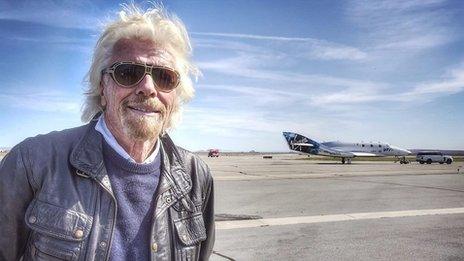
- Published7 June 2019
